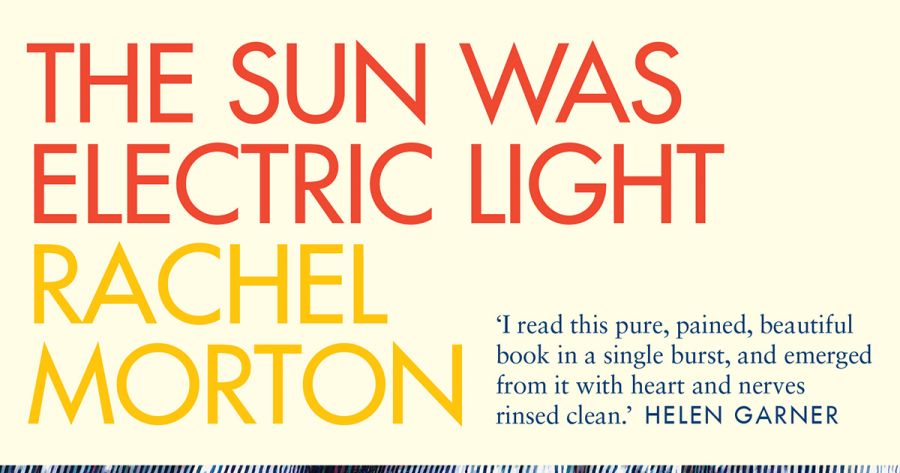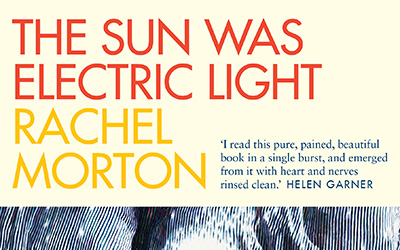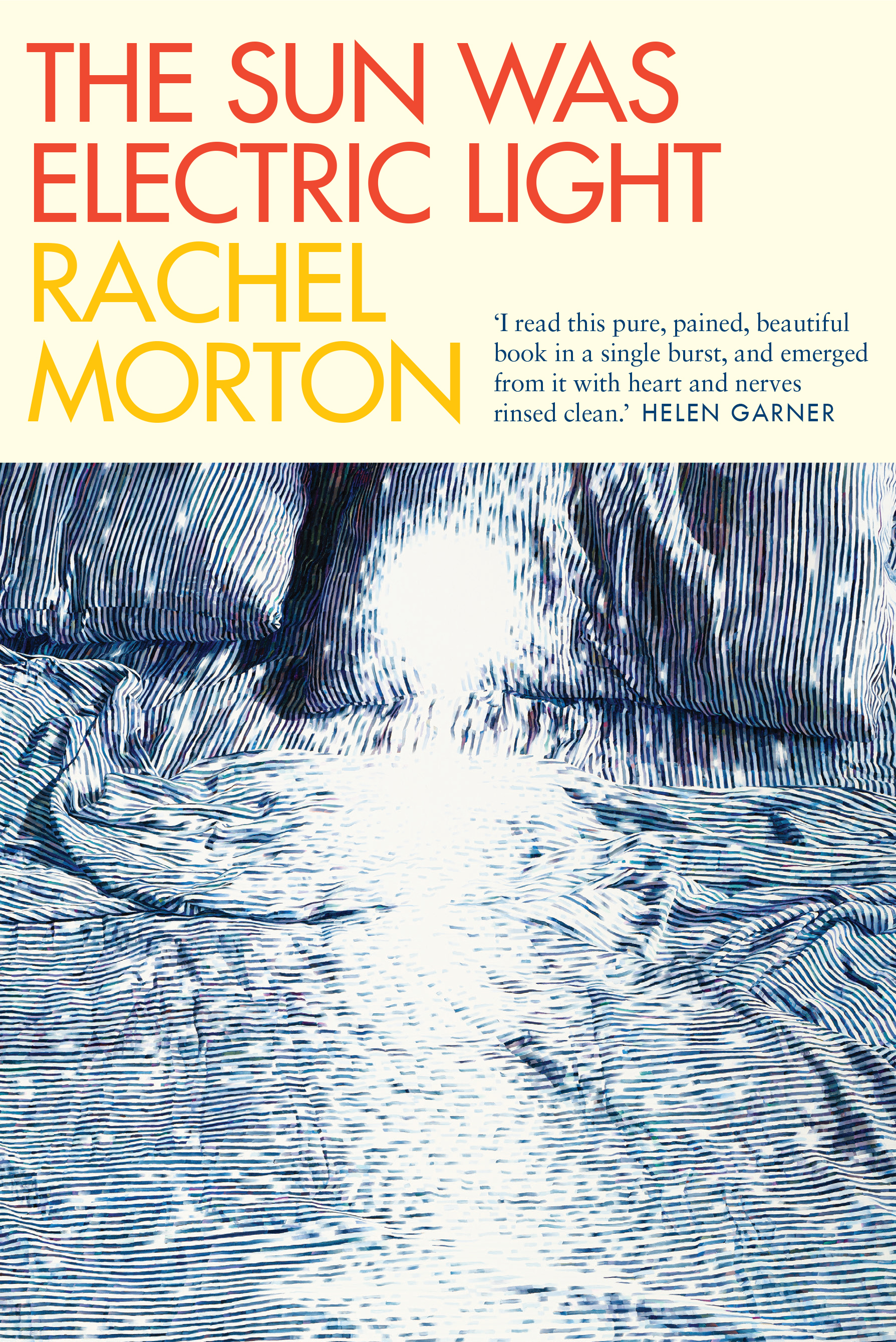
- Free Article: No
- Contents Category: Fiction
- Review Article: Yes
- Article Title: Poof! Float away
- Article Subtitle: Solace in a globalised world
- Online Only: No
- Custom Highlight Text:
From whiskey priests and crazed conquistadors to sun-maddened tourists, stories of white exile in South America are staples of Western literature and film. Such tropes are productively complicated in an outstanding début novel by Rachel Morton.
- Featured Image (400px * 250px):

- Alt Tag (Featured Image): A. Frances Johnson reviews ‘The Sun Was Electric Light’ by Rachel Morton
- Book 1 Title: The Sun Was Electric Light
- Book 1 Biblio: University of Queensland Press, $34.99 pb, 224 pp
- Book 1 Cover Small (400 x 600):

- Book 1 Cover (800 x 1200):

- Book 1 Readings Link: https://www.readings.com.au/product/9780702268892/the-sun-was-electric-light--rachel-morton--2025--9780702268892#rac:jokjjzr6ly9m
The Sun was Electric Light won the 2024 Victorian Premier’s Literary Award for an unpublished manuscript and the 2025 UQP Quentin Bryce Award. What, then, makes this book outstanding and, indeed, prizeworthy? Dame Quentin Bryce herself has stated that this poignant novel is ‘filled with longing for those people and places we’ve lost – and perhaps never truly found in the first place’. For Bryce, Morton’s novel leads us through ‘the ache of grief, for self and others towards acceptance’.
These are perennial themes. But what enables this novel to sidestep elegiac predictability and tugging melancholy, as well as dated tropes of the (white) innocent abroad, is a pared-back, often hypnotic writing style, threaded with bursts of emotional observation as bright as a Guatemalan weave. We are also gifted a beguiling, unreliable narrator, Ruth, who over time becomes more emotionally vivid to herself and thence to readers as she hesitantly navigates loss.
Morton never exoticises the popular Guatemalan lake town of Panajachel where Ruth, washes up in flight from failed life experiences in New York. Ruth is not well off, though her global mobility eclipses the opportunities of most Guatemalans with whom she mingles. We learn, obliquely, that she is ‘trying to do things differently’, to ‘get to where things felt real’.
The obscuring of Ruth’s recent past and origins (New York, north-east Victoria) builds dramatic tension but also suggests a naïf in danger of skipping from one place of exile to another. Ruth avers early on: ‘Life seemed to be mainly about love, about love and staying alive. I did not love anyone back then, but I remembered that, once, I had loved a place … I had loved the lake and I had not really loved anything since.’
Such mysterious yearnings are occasionally reminiscent of Jenny Erpenbeck’s 2010 Brandenburg-based, lakeside novel Visitation. Morton helps us see beyond Ruth’s periodically idealised sense of place. Early on, Ruth is ensconced in James A. Michener’s fictionalised history Mexico (1992), purloined from her cheap hotel’s ‘free books’ shelf. ‘It felt real even though it was made up,’ she confides, as if fabrication, too, had been the story of her own life. But Mexico is not Guatemala. Equally, Guatemala may not be Ruth, the reader feels, with a sense of foreboding as romantic, touristic delusions play out. Lake swims are curtailed when a posse of local men and boys steadily gather to watch. The lake as love object (Ruth variously talks to and seeks counsel from the lake) now risks objectifying her, threatening gendered violence. ‘I never swam there again,’ she observes bluntly. Inevitably, she moves away, forsaking au pair work for a dignifying, if unpaid, English teaching job in the nearby hamlet of Jaibalito.
Ruth has already befriended Carmen and Dwain, abandoned progeny of American hippie expatriates. Beautiful Carmen is given to turbulent behaviour and no-shows like her tragic operatic namesake; unwashed, weed-smoking Dwain, of the dial-a-plumber appellation, reminds Ruth of a tourist who has ‘stayed too long’. Both have grown up in Panajachel and are usefully versed in outsider insights. That their identities slip between the cracks (they lack both Guatemalan and American roots) erodes their inner confidence; like Ruth, neither have anchoring ties to Panajachel. The three gravitate together, a little lost tribe. Standing outside this troubled confraternity is the redoubtable Swiss field sociologist and Ruth’s on-again-off-again love interest Emilie, who pinpoints the problem: ‘All I am saying is that you need one reason, just one, outside of yourself, to be in a place. Like string. You need to be tied to one thing at least. Or you will float away. Like the hippies here – poof! They are not tied to anything.’
But Emilie cannot heal Ruth’s unspecified anomie. ‘You still need to live your own life. You need to go on,’ Emilie advises. ‘Go on? What does that mean?’ Ruth replies in Beckettian style. ‘I am going on. This is what going on looks like to me.’ Unlike Carmen, Dwain, and Emilie, details from Ruth’s past are rarely disclosed. Ruth is born into the novel carrying a melancholy silence, a dramatic device that makes small revelations feel like emotional thunderbolts.
Throughout, Guatemalan village life is beautifully and respectfully observed, as is the wretched class snobbery attending the wealthy lakeside Guatemalans who employ Ruth to care for their unhappy children. Older villagers like the kindly Miguel are occasionally overdrawn as fonts of paternal wisdom. ‘You have a duty to accept the trajectory of your life,’ he tells her rather verbosely, to ‘remember who you are’. I wasn’t sure that such language sat naturally with him. Another wise elder appears late in the novel, German expat hippie sculptor Hans, who invites Ruth into his ‘gingerbread’ house in Pátzcuaro, encouraging Ruth’s fledgling carving experiments. There is nothing particularly valuable about the gnomic objects Ruth makes, only, perhaps, the lesson of knowing through making. By the novel’s end, after a devastating denouement, Ruth fashions a convincing rapprochement with uncertainty and loss. ‘I didn’t think I’d made a mistake by coming here,’ she says. ‘The mistake was everywhere, the mistake was the whole world, and the mistake was inside me. It didn’t matter where I was, the mistake would follow me.’
Morton’s protagonist, having spontaneously and witlessly escaped ‘normal life’, is inserted into alien contexts of class, culture, and environment, a dramatically generative, though risky move. Morton walks a knife-edge, yet her unflinching portrayal of Ruth’s existential agonies is so moving that the novel avoids a neocolonial abyss. By the end, Ruth looks something like ourselves, searching for solace and communion in a globalised world.


Comments powered by CComment